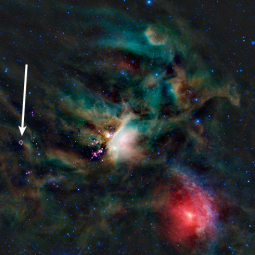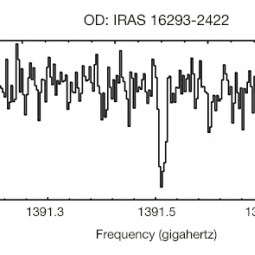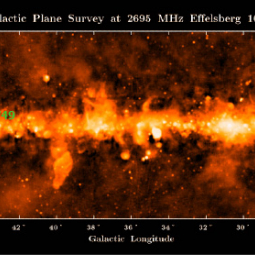Scientific results from observations made in 2011 from NASA’s Stratospheric Observatory for Infrared Astronomy, SOFIA, show the first detection in the interstellar medium of two molecules, the mercapto radical SH and the deuterated hydroxyl radical OD. SH is important for the investigation of sulfur chemistry in the interstellar medium, and OD, a version of hydroxyl (OH) with the hydrogen atom replaced by a heavier deuterium atom, plays a corresponding role in understanding the chemical pathways for formation of water in the universe. Both molecules show transition lines in the terahertz regime of the electromagnetic spectrum that cannot be observed from ground-based telescopes.
The detection and investigation of interstellar molecules is one of the strong suits of the German Receiver for Astronomy at Terahertz Frequencies, or GREAT, spectrometer. GREAT has been developed by a consortium of German research institutes led by Rolf Guesten of the Max Planck Institute for Radio Astronomy. These results were published in the May 2012 special issue of the European journal Astronomy & Astrophysics Letters (GREAT: early science results, A&A 542, F1).
SOFIA is a partnership of NASA and the German Aerospace Center (DLR). NASA’s Dryden Flight Research Center (Edwards, Calif.) manages the SOFIA program. NASA's Ames Research Center (Moffett Field, Calif.) manages SOFIA’s science mission in cooperation with the Universities Space Research Association (USRA; Columbia, Md.) and the German SOFIA Institute (DSI; Stuttgart). SOFIA is based at NASA’s Dryden Aircraft Operations Facility (DAOF) in Palmdale, Calif.



